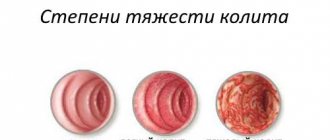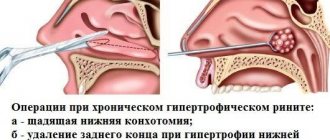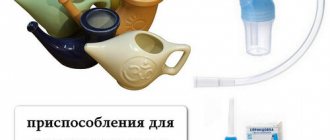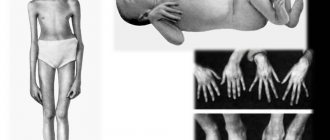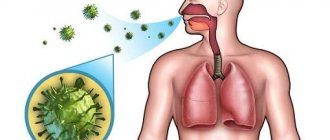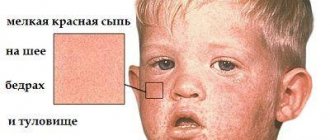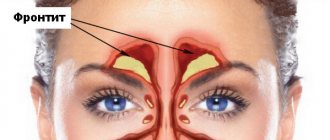Unpleasant sensations in the navel area can cause significant trouble and lead to serious consequences. Typically, the occurrence of pain signals a disease such as an umbilical hernia in women. You should definitely think about getting rid of the disease and choose the right treatment. Alternative medicine may not always give positive results; it is best to seek professional help. Modern therapy will correctly determine the signs of an umbilical hernia in women.
General description of the disease
A hernia is a pathological manifestation associated with subcutaneous release of a segment of internal organs through the abdominal wall. The umbilical zone is especially sensitive to pressure from the internal organs, so you can visually notice them protruding through the hernial sac. In children who acquire this defect through birth trauma, with properly established life-activity procedures, everything returns to normal quite quickly. As for adult patients, even with treatment, an enlarged umbilical ring is not always possible to quickly return to its previous position. Often, an umbilical hernia in women is diagnosed in middle age; the onset of the disease is associated with stretching of the umbilical ring during gestation, and then with atrophy of the stretched tissues in the area of the umbilical ring.
How to treat
Pregnant women should postpone surgery to remove a hernia. If there are no contraindications to surgery, it must be done as quickly as possible.
The surgeon chooses the surgical technique depending on:
- The size of the hernial sac;
- Contents;
- Reasons for appearance;
- The patient’s age, his general condition;
- Conditions of the tissues around the bag.
There are 2 methods of umbilical hernia surgery: open methods and laparoscopy.
Public Methods
They are performed by making an incision in the abdominal wall.
- Tension method.
Advantages: easy to implement.
Disadvantages: frequent relapses (therefore it is used for small hernial sacs).
- Not a tension method.
Advantages: any hernia is closed at any size and condition of the tissues of the umbilical area.
Disadvantages: high price, difficulty in implementation.
laparoscopy
It is carried out without an incision in the abdominal wall.
During the operation, instruments and an optical device are inserted into the abdominal cavity, and the contents of the hernial sac are reduced. The mesh implant closes the umbilical ring, which will avoid relapse of the disease.
Disadvantages of laparoscopy: the operation is difficult to perform, high price.
Causes of umbilical hernia
Doctors most often diagnose a genetic predisposition to the disease in those patients who turn to them for help in treating an umbilical hernia. However, there are other causes of umbilical ring defects:
- obesity and a sedentary lifestyle, and, as a result, undeveloped abdominal muscles;
- anorexia, accompanied by atrophy of muscles and internal organs;
- poor nutrition, diseases of the gastrointestinal system, chronic constipation;
- injuries in the abdominal area;
- the presence of postoperative scars;
- diseases of internal organs: prostate adenoma, liver cirrhosis;
- pregnancy and gestation, which involves pressure on the abdominal cavity;
- work involving heavy physical labor and heavy lifting.
Having found out the cause, you should immediately seek help from a qualified specialist, since an umbilical hernia in women in an advanced form can lead to such unpleasant consequences as infringement of the abdominal organs, intoxication of the body and tissue atrophy.
Traditional medicine recipes
On the Internet you can find many recipes that guarantee a complete cure for umbilical hernia in women without surgery. Think twice before using them. After all, this disease is very dangerous, especially for the female body. An umbilical hernia can cause not only problems with the gastrointestinal tract, but also provoke pathological processes in the pelvic organs.
There are several traditional medicine recipes, but before using them, be sure to consult your doctor.
- At night, just before bed, place a tablespoon of any natural honey on the area of the umbilical hernia, where the protrusion itself is, then cover with a clean napkin, then secure with a bandage. In the morning, the honey is thoroughly washed off with warm water and iodine is applied around the hernia (in the form of a circle 5-10 mm wide). On the same day, at night, add honey again and repeat the whole procedure again. The course of such manipulations is strictly individual; they must be carried out until the hernia disappears.
- The second method of traditional treatment involves the use of propolis and butter (preferably homemade). One tablespoon of propolis is thoroughly crushed, placed in a 0.5 liter glass jar and filled with vodka. Place in a dark place for 10-12 days. The contents must be shaken well once a day. Treatment using this recipe is as follows: heat 200-250 g of butter in a water bath, add 2 tbsp. l. propolis in alcohol/vodka. The mixture must be mixed well and allowed to cool to room temperature. The resulting mixture is applied around the hernia. Make sure that the mixture does not get into the navel itself, after which a cloth and a tight bandage, or a woolen scarf, are placed on top. It is recommended to do it at night. The approximate course of treatment is 1-2 months.
It should be remembered that self-treatment of an inguinal hernia can result in serious complications, including death. All information is for informational purposes only. Treatment of umbilical hernia in women, both surgically and without surgery, should be carried out exclusively by a doctor.
Recommendations for preventing umbilical hernia
To prevent the development of unpleasant consequences during pregnancy, you must follow these simple rules:
- use specialized underwear and a bandage that reduces the load on the abdominal muscles;
- moderate physical activity;
- special massage;
- a balanced diet, including coarse fiber for proper intestinal function and the absence of constipation.
Usually, after childbirth, an umbilical hernia in women resolves naturally and no longer causes any problems.
Symptoms of the disease
The most common symptom of the disease is visual bulging of skin tissue in the navel area. At the initial stage of development of the disease, the presence of this deformity practically does not interfere with everyday life, and the hernia can be repaired. However, symptoms can also appear in another form, which clearly indicates that the hernia cannot be repaired and should be treated. Signs of an umbilical hernia in women are as follows:
- pain and increased tissue volume in the navel area;
- the occurrence of a sharp nagging pain during any physical activity, coughing and defecation;
- umbilical ring stretching;
- regular constipation and nausea indicate the presence of a large part of the intestine in the hernial sac; Vomiting rarely occurs.
This is how an umbilical hernia manifests itself in women. Symptoms indicate that self-treatment is contraindicated. In case of severe pain, vomiting, or blood in the stool, apply an ice compress to the abdominal area and call emergency medical attention.
Complications
If an umbilical hernia is not treated in time, women are at risk of developing a number of complications. The main ones include:
- The formation of an inflammatory process in the abdominal cavity.
- Incarceration of the hernial sac.
- Intestinal obstruction.
- Circulatory disorders.
- Death of tissue in the large or small intestine.
- Constant aching or sharp pain.
- Intoxication.
- Peritonitis.
Important: if any complications develop, treatment of an umbilical hernia will be longer and more difficult, and often will not be possible without surgical intervention.
An umbilical hernia in adults is dangerous due to possible complications. First of all, a pinched hernia. It occurs when the contents of the hernial sac become pinched in the hernial opening. This complication is characterized by acute pain, vomiting, nausea, and fever. A patient with a pinched umbilical hernia needs urgent medical attention.
Inflammation of the umbilical hernia. This complication occurs when the hernial sac becomes infected. As a result, a purulent process develops, which can threaten inflammation of the entire abdominal cavity. Symptoms of inflammation of the umbilical hernia in adults: fever, nausea, vomiting, weakness, acute pain in the area of the hernial sac and in the abdomen.
Stagnation of feces in the umbilical hernia is coprostasis. This complication develops slowly and is characterized by constipation, abdominal pain, which becomes more pronounced every day, and the hernial sac is filled with a pasty mass. Coprostasis occurs due to impaired intestinal motility and a sedentary lifestyle.
If symptoms of complications with an umbilical hernia appear, namely
- nausea;
- vomit;
- temperature increase;
- acute abdominal pain;
- acute pain in the area of the hernial sac;
- If you have diarrhea or lack of bowel movements for several days, you should urgently seek medical help to treat umbilical hernias.
If left untreated, an umbilical hernia after childbirth is complicated by:
- Inflammation. Occurs when the blood supply to prolapsed organs is disrupted and bacterial infections occur. Characterized by a deterioration in the general condition of the woman. Swelling and acute pain in the navel area, chills, and aches in the muscles and joints appear.
- Intestinal obstruction. It develops against the background of the accumulation of a large amount of solid feces in the intestinal sections located in the hernial sac.
Umbilical hernia in women - treatment without surgery
In some cases, surgery is not required. How dangerous can an umbilical hernia be in women? Treatment will depend on the symptoms of the disease.
At the initial stage of development, you can relieve symptoms using various non-traditional means on your own. However, such treatment applies only to simple forms of the disease.
Unconventional methods of treatment
So, correction of the umbilical zone defect is carried out using the following methods:
- Compresses. A piece of gauze is applied to the affected area. The following drugs are used as medicinal recipes: oatmeal, crushed nettle leaves, camphor oil, mumiyo, honey, red and yellow clay, oak bark.
- Herbal infusions. They are used as an oral medicine to establish the correct position of the navel, relieve pain and muscle tension. All decoctions are brewed with boiling water and infused, after which they are filtered and taken. The following herbs are used for these purposes: loosestrife (weeping grass), cinquefoil, meadowsweet, twisted cornflower, cinquefoil.
- Massage course. Has a stimulating effect on muscle tissue. It is performed in a circular motion manually or with special jars.
- Simple exercises to strengthen the abdominal muscles: in a lying position - arching the chest and lifting the torso off the floor.
- Special patches. They have a weak therapeutic effect, but are harmless and convenient for pregnant women and newborns (Porofix, Chicco, Hartmann).
- Treatment with copper. In folk medicine, it is believed that applying a copper coin to the navel relieves illness.
It should be noted once again that in case of the slightest complications, redness and severe pain, you should immediately stop self-medication and consult a specialist. Otherwise, serious complications may occur.
Umbilical hernia in women - surgery
It is also possible to eliminate unpleasant symptoms with the help of surgery, but only if the surgeon has examined and made a diagnosis. An operation to eliminate a hernia is performed only in a hospital setting and can be performed using three methods:
- Tension hernioplasty is performed under local anesthesia, without the use of specialized equipment. Its essence is to trim excess tissue around the navel, reduce the hernia and tighten the hernial orifice. All this is performed by the skilled hands of a surgeon, but such operations are often painful and there are cases of relapse of the disease. Restrictions on physical activity are imposed for up to 1 year.
- Hernioplasty with endoprosthetics differs from the previous method in that instead of stitching tissue together, doctors cover the umbilical ring with a sterile endoprosthesis; it grows into living tissue and prevents the recurrence of the disease. The rehabilitation period is up to a month.
- Laparoscopic surgery is performed using small punctures in the abdominal cavity, without cutting tissue. This operation requires special equipment and highly qualified specialists. However, the postoperative rehabilitation period is minimal, and after two weeks the patient can already perform simple physical exercises.
All of the listed methods differ in technique, cost, and duration of the postoperative recovery period.
However, surgery is the most effective method of getting rid of an umbilical hernia.
Diagnostics
Diagnosis consists of X-rays of the stomach, herniography, endoscopy (endoscopy). An ultrasound of the abdominal wall is also prescribed, although the hernia may go away while lying on your back, and it is difficult to detect it using ultrasound.
If the hernia is small in size, it is more difficult to diagnose. But modern medical methods are likely to determine it.
If signs of illness appear, you should go to a therapist or surgeon. The doctor can make a preliminary diagnosis after routine palpation of the lump. Sometimes the outlines of intestinal loops are visible through the skin of the navel and peristalsis is slightly visible. The doctor will notice this before the examination.

